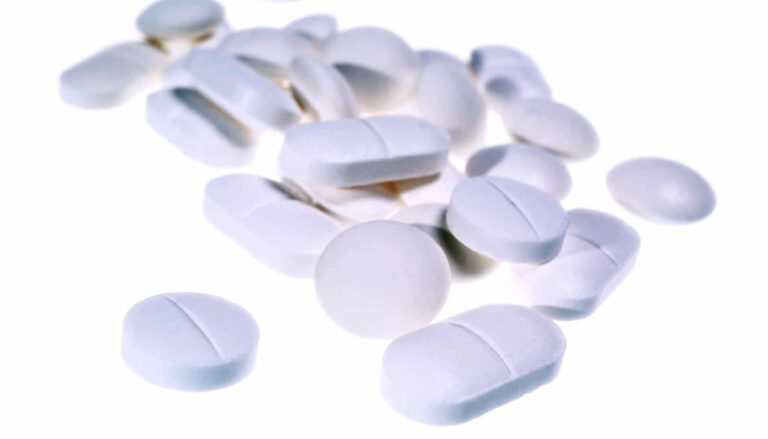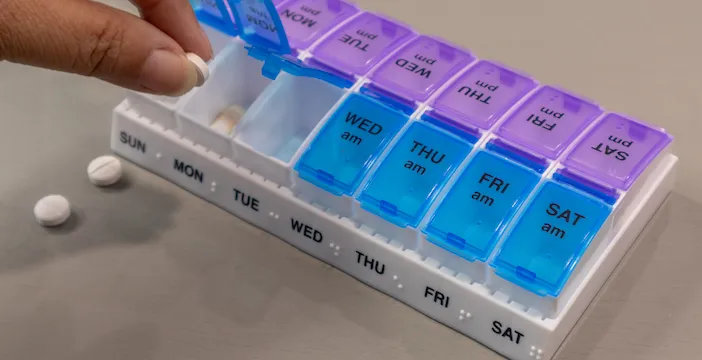How Modafinil Combats Excessive Daytime Sleepiness
Excessive daytime sleepiness (EDS) can leave individuals feeling persistently drowsy and struggling to stay alert, even after a full night’s rest. This condition can significantly impair daily functioning, productivity, and safety. Modafinil, a wakefulness-promoting agent, has become a widely used treatment for EDS associated with disorders such as narcolepsy, obstructive sleep apnea (OSA), and shift work sleep disorder (SWSD). This article explores Modafinil’s pharmacology, clinical uses, safety profile, and the evidence supporting its role in combating EDS.
Pharmacology of Modafinil
The exact mechanism by which Modafinil promotes wakefulness remains incompletely understood. Unlike traditional stimulants that broadly activate the central nervous system, Modafinil selectively targets wakefulness-promoting regions in the hypothalamus. It inhibits the dopamine transporter, increasing extracellular dopamine levels without directly binding dopamine receptors, thereby promoting alertness with a lower abuse potential (Schwartz, 2009; Valentino & Foldvary-Schaefer, 2007).
Modafinil also modulates other neurotransmitter systems indirectly, including orexin/hypocretin and histamine pathways, which contribute to maintaining wakefulness (Schwartz, 2009). The drug is a racemic compound with two enantiomers; the R-enantiomer (armodafinil) has a longer half-life and contributes predominantly to the wake-promoting effects (Schwartz, 2009).
Pharmacokinetics and Metabolism
Orally administered Modafinil is rapidly absorbed, reaching peak plasma concentration approximately two hours after ingestion. It is extensively metabolized in the liver, primarily via cytochrome P450 enzymes (notably CYP3A4 and CYP2C19), with less than 10% excreted unchanged in urine (Schwartz, 2009; Valentino & Foldvary-Schaefer, 2007). The elimination half-life ranges from 12 to 15 hours, supporting once-daily dosing (Valentino & Foldvary-Schaefer, 2007).
Approved Clinical Uses
Narcolepsy
Narcolepsy is characterized by chronic excessive sleepiness and symptoms related to abnormal rapid eye movement (REM) sleep phenomena, such as cataplexy. Modafinil is FDA-approved to manage EDS in narcoleptic patients and has shown efficacy in large, placebo-controlled trials, significantly improving both subjective sleepiness (measured by the Epworth Sleepiness Scale) and objective measures such as mean sleep latency (Valentino & Foldvary-Schaefer, 2007; FDA, 2015).
Obstructive Sleep Apnea (OSA)
OSA involves repeated airway obstruction during sleep, leading to disrupted breathing and daytime sleepiness. Continuous positive airway pressure (CPAP) remains the gold standard for treatment; however, some patients experience residual sleepiness despite optimal CPAP use. Modafinil is approved as an adjunct to CPAP therapy for such patients, improving wakefulness without addressing the underlying airway obstruction (FDA, 2015; Schwartz, 2009).
Shift Work Sleep Disorder (SWSD)
SWSD results from misalignment between circadian rhythms and work schedules, leading to impaired alertness during work hours. Modafinil administered approximately one hour before a night shift has demonstrated improvements in vigilance and reduced sleepiness during and after work shifts (Valentino & Foldvary-Schaefer, 2007; Gandhi et al., 2021).
Measuring Excessive Daytime Sleepiness
Reliable assessment tools are critical in diagnosing and managing EDS:
- Epworth Sleepiness Scale (ESS): A widely used self-administered questionnaire quantifying likelihood of dozing in daily situations. Scores above 10 suggest pathological sleepiness (Valentino & Foldvary-Schaefer, 2007).
- Multiple Sleep Latency Test (MSLT): The gold-standard objective test measuring time to fall asleep across multiple nap opportunities; mean sleep latency below 8 minutes indicates excessive sleepiness (Valentino & Foldvary-Schaefer, 2007).
- Maintenance of Wakefulness Test (MWT): Measures ability to stay awake and is often used to evaluate treatment response (Valentino & Foldvary-Schaefer, 2007).
Off-Label Uses and Limitations
Modafinil has been explored for fatigue and sleepiness in conditions such as multiple sclerosis, ADHD, depression, Parkinson’s disease, and chronic fatigue syndrome. However, evidence remains mixed or insufficient to support routine use in these populations (Gandhi et al., 2021). More robust clinical trials are needed.
Safety and Side Effects
Modafinil is generally well tolerated. Common side effects include headache, nausea, nervousness, and insomnia (FDA, 2015). Serious adverse effects, such as severe rash (including Stevens-Johnson syndrome), angioedema, and psychiatric symptoms (e.g., anxiety, mania, hallucinations), though rare, require immediate discontinuation and monitoring (FDA, 2015).
Modafinil can modestly increase blood pressure in some patients, warranting cardiovascular monitoring, especially in those with preexisting conditions (FDA, 2015). It is classified as a Schedule IV controlled substance due to low abuse potential (Greenblatt & Adams, 2023).
Drug Interactions
Modafinil’s metabolism via cytochrome P450 enzymes leads to interactions with several drugs. It induces CYP3A4, potentially reducing the effectiveness of oral contraceptives, cyclosporine, and carbamazepine, among others. It inhibits CYP2C19, increasing plasma concentrations of diazepam, phenytoin, and propranolol (Schwartz, 2009; FDA, 2015). Healthcare providers should monitor patients closely and consider dose adjustments when needed.
Dosage and Administration
The FDA recommends a typical dose of 200 mg once daily in the morning for narcolepsy and OSA, and 200 mg approximately one hour before a night shift for SWSD. Dose adjustments are advised for hepatic impairment and elderly patients (FDA, 2015).
Future Directions and Research Needs
While Modafinil is well established for EDS associated with narcolepsy, OSA, and SWSD, further head-to-head clinical trials comparing Modafinil to traditional stimulants are needed to define its relative efficacy and safety. Research into additional indications such as traumatic brain injury, mood disorders, and cognitive enhancement is ongoing (Gandhi et al., 2021).
Conclusion
Modafinil effectively promotes wakefulness and reduces excessive daytime sleepiness in several clinical disorders. Its unique pharmacological profile, relatively low abuse potential, and tolerability make it a valuable option for managing EDS. Continued research and careful clinical monitoring will further optimize its use and expand understanding of its therapeutic potential.
References
- U.S. Food and Drug Administration. (2015). PROVIGIL® (modafinil) tablets, for oral use, C-IV [prescribing information]. U.S. Department of Health and Human Services. https://www.accessdata.fda.gov/drugsatfda_docs/label/2015/020717s037s038lbl.pdf
- Greenblatt, K., & Adams, N. (2023). Modafinil. In StatPearls. StatPearls Publishing. https://www.ncbi.nlm.nih.gov/books/NBK531476/
- Gandhi, K. D., Mansukhani, M. P., Silber, M. H., & Kolla, B. P. (2021). Excessive daytime sleepiness: A clinical review. Mayo Clinic Proceedings, 96(5), 1288–1301. https://doi.org/10.1016/j.mayocp.2020.08.033
- Valentino, R. M., & Foldvary-Schaefer, N. (2007). Modafinil in the treatment of excessive daytime sleepiness. Cleveland Clinic Journal of Medicine, 74(8), 561–566, 568–571. https://pubmed.ncbi.nlm.nih.gov/17708127/
- Schwartz, J. R. (2009). Modafinil in the treatment of excessive sleepiness. Drug Design, Development and Therapy, 2, 71–85. https://doi.org/10.2147/dddt.s2377








